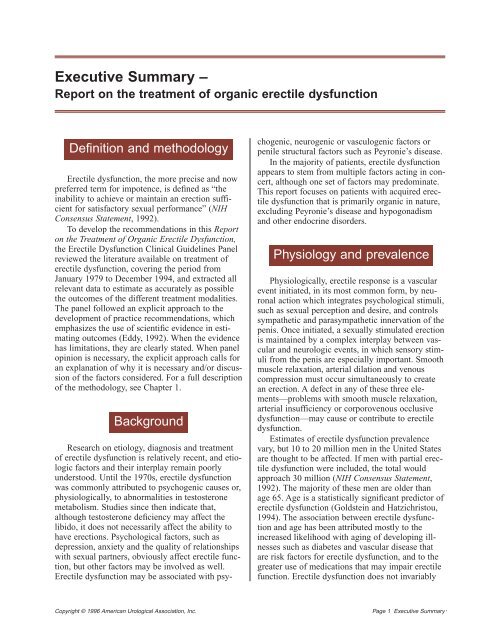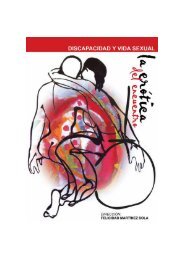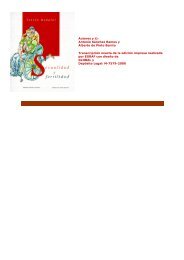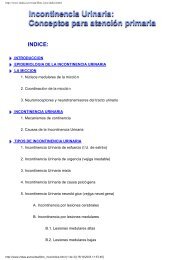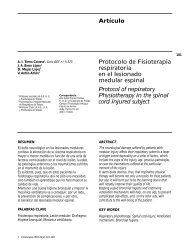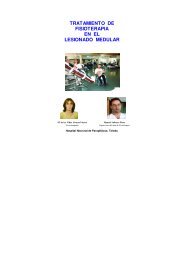The American Urological Association Erectile Dysfunction ... - Vastim
The American Urological Association Erectile Dysfunction ... - Vastim
The American Urological Association Erectile Dysfunction ... - Vastim
Create successful ePaper yourself
Turn your PDF publications into a flip-book with our unique Google optimized e-Paper software.
Executive Summary –Report on the treatment of organic erectile dysfunctionDefinition and methodology<strong>Erectile</strong> dysfunction, the more precise and nowpreferred term for impotence, is defined as “theinability to achieve or maintain an erection sufficientfor satisfactory sexual performance” (NIHConsensus Statement, 1992).To develop the recommendations in this Reporton the Treatment of Organic <strong>Erectile</strong> <strong>Dysfunction</strong>,the <strong>Erectile</strong> <strong>Dysfunction</strong> Clinical Guidelines Panelreviewed the literature available on treatment oferectile dysfunction, covering the period fromJanuary 1979 to December 1994, and extracted allrelevant data to estimate as accurately as possiblethe outcomes of the different treatment modalities.<strong>The</strong> panel followed an explicit approach to thedevelopment of practice recommendations, whichemphasizes the use of scientific evidence in estimatingoutcomes (Eddy, 1992). When the evidencehas limitations, they are clearly stated. When panelopinion is necessary, the explicit approach calls foran explanation of why it is necessary and/or discussionof the factors considered. For a full descriptionof the methodology, see Chapter 1.BackgroundResearch on etiology, diagnosis and treatmentof erectile dysfunction is relatively recent, and etiologicfactors and their interplay remain poorlyunderstood. Until the 1970s, erectile dysfunctionwas commonly attributed to psychogenic causes or,physiologically, to abnormalities in testosteronemetabolism. Studies since then indicate that,although testosterone deficiency may affect thelibido, it does not necessarily affect the ability tohave erections. Psychological factors, such asdepression, anxiety and the quality of relationshipswith sexual partners, obviously affect erectile function,but other factors may be involved as well.<strong>Erectile</strong> dysfunction may be associated with psychogenic,neurogenic or vasculogenic factors orpenile structural factors such as Peyronie’s disease.In the majority of patients, erectile dysfunctionappears to stem from multiple factors acting in concert,although one set of factors may predominate.This report focuses on patients with acquired erectiledysfunction that is primarily organic in nature,excluding Peyronie’s disease and hypogonadismand other endocrine disorders.Physiology and prevalencePhysiologically, erectile response is a vascularevent initiated, in its most common form, by neuronalaction which integrates psychological stimuli,such as sexual perception and desire, and controlssympathetic and parasympathetic innervation of thepenis. Once initiated, a sexually stimulated erectionis maintained by a complex interplay between vascularand neurologic events, in which sensory stimulifrom the penis are especially important. Smoothmuscle relaxation, arterial dilation and venouscompression must occur simultaneously to createan erection. A defect in any of these three elements—problemswith smooth muscle relaxation,arterial insufficiency or corporovenous occlusivedysfunction—may cause or contribute to erectiledysfunction.Estimates of erectile dysfunction prevalencevary, but 10 to 20 million men in the United Statesare thought to be affected. If men with partial erectiledysfunction were included, the total wouldapproach 30 million (NIH Consensus Statement,1992). <strong>The</strong> majority of these men are older thanage 65. Age is a statistically significant predictor oferectile dysfunction (Goldstein and Hatzichristou,1994). <strong>The</strong> association between erectile dysfunctionand age has been attributed mostly to theincreased likelihood with aging of developing illnessessuch as diabetes and vascular disease thatare risk factors for erectile dysfunction, and to thegreater use of medications that may impair erectilefunction. <strong>Erectile</strong> dysfunction does not invariablyCopyright © 1996 <strong>American</strong> <strong>Urological</strong> <strong>Association</strong>, Inc.Page Page 1 Executive Summary


